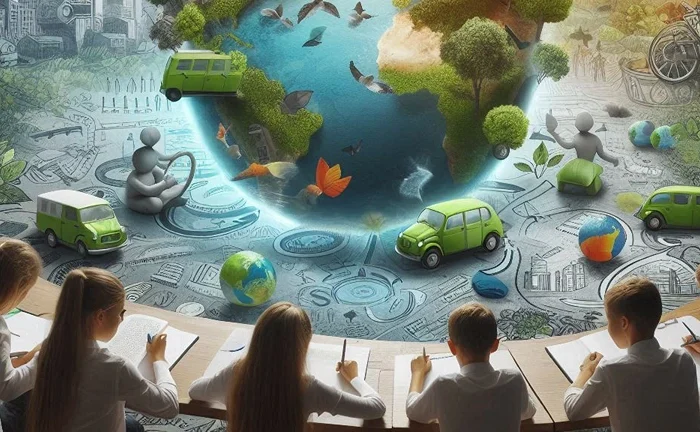Environmental education: Increases consciousness regarding how human actions affect the Earth, aiding people in recognizing the significance of eco-friendly habits.Environmental advocacy: involves influencing public policy and resource allocation to promote sustainability. Advocates work to raise awareness, mobilize support, and push for legislative changes through lobbying, public speaking, and campaigns. They engage with political, economic, and social systems to highlight environmental issues and drive policy reform.

Green Schools: A global initiative that offers a structure for educational institutions to involve students in learning about the environment and adopting eco-friendly habits. Institutions focus on different topics such as energy, water, and wildlife.
Earth Day Network: Coordinates activities and initiatives worldwide to inform and encourage individuals to take action on environmental matters. On April 22nd, Earth Day is a significant occasion that attracts countless participants from around the globe.
The Green Belt Movement: Founded by Wangari Maathai in Kenya, this movement focuses on tree planting, environmental conservation, and women’s empowerment. It has planted millions of trees and raised awareness about deforestation and climate change.
The National Geographic Society: provides educational programs and resources, including the engaging National Geographic Kids platform. Through interactive content and activities, they foster environmental awareness and conservation among children.
As for the Sierra Club, it stands as one of the oldest and largest environmental organizations in the United States. Their impactful campaigns and educational initiatives focus on promoting conservation, clean energy solutions, and environmental justice
Greenpeace: Known for its direct action campaigns, Greenpeace also focuses on raising awareness and educating the public about environmental issues through reports, documentaries, and advocacy efforts.
World Wildlife Fund (WWF): Engages in global conservation efforts and provides educational resources to teach people about biodiversity, endangered species, and sustainable living.
Environmental Defense Fund (EDF): Works on various environmental issues, including climate change, energy, and ecosystems. EDF provides educational materials and engages in advocacy to influence policy.
Conclusion: environmental education and advocacy are crucial for fostering a sustainable future. Education equips individuals with knowledge and skills to make informed decisions and take responsible actions, while advocacy drives systemic change by influencing policies and raising public awareness. Together, they empower communities to address environmental challenges effectively, promoting a more informed and engaged society that prioritizes the health of our planet. By integrating education and advocacy efforts, we can create a robust foundation for lasting environmental stewardship and progress.